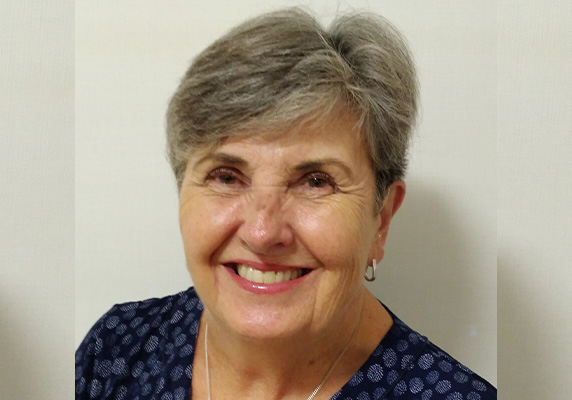The NSW Government's Transport for NSW Disability Inclusion Action Plan acknowledges the importance of access to public transport. But people with disability are facing many barriers to access, say advocacy organisations, and both transport systems and compliance mechanisms need reform.
In March 2023, an international survey by the Oliver Wyman Forum and Institute of Transportation Studies at the University of California, Berkeley, ranked Sydney’s public transport system as among the best in the world, the only Australian city to make the grade. Sydney placed 14th out of 60 cities on the list. The survey claimed that “Sydney boasts a strong multimodal transport network, seamlessly connecting bus, train, and ferry,” and the “fully automated metro system … is one of the world’s most innovative transit systems”.
It must have been music to the ears of Transport NSW, especially in the face of controversy over its increasing privatisation of buses and trains. However, does the ranking ring true for the 1.37 million people in NSW (one in five of the state’s population) who have a disability?
Without reliably accessible transport, people with disability face a significant barrier to attending their medical appointments and other health services, being able to evacuate safely during disasters, attending education facilities or jobs, accessing community supports and services, and engaging in social interaction as other members of the community are freely able to do.
The NSW Disability Inclusion Action Plan
In December 2017, the NSW Government published its Transport for NSW Disability Inclusion Action Plan 2018–2022. It began by acknowledging that “access to transport is a crucial first step to ensuring that people have the means to participate in education, employment, recreation and all aspects of community life.”
The Inclusion Action Plan aligns with the Disability Inclusion Act 2014 (NSW), which requires all government departments to develop Disability Inclusion Action Plans. The 2018–2022 Plan was an update of Transport for NSW’s Disability Action Plan 2012–2017, and is consistent with the objectives of the Disability Discrimination Act 1992 (Cth) (DDA) and the Government Sector Employment Act 2013 (NSW).
Reform areas and implementation arrangements resulting from Stage 2 of the 2022 Review of the Disability Standards for Accessible Public Transport 2002 were confirmed on 9 June 2023, and reforms are awaiting the Australian Government approval process.
We don’t have the teeth
Sydney-based Giancarlo de Vera (he/they) is the Senior Manager of Policy at People With Disability Australia (PWDA). They are also the inaugural Secretary of the Disabled Australian Lawyers Association, and Treasurer of the Australian Centre for Disability Law.

In their capacity as 2023 International Day of People with Disability Ambassador, de Vera gave an address at Parliament House in Canberra on 30 November 2023.
“The power of ableism is the pressure to conform. But the antidote to ableism is the pride to simply be: as imperfect, yet full and complete human beings,” they said.
At another point in their address de Vera said there is no standard, “normal” way of being, and it is imperative to ensure that as a community we create ways for all people to lead dignified lives, with the associated freedoms and opportunities.
It was a sentiment that aligned with the advocacy role PWDA has played since 1981. On 30 June 2023, PWDA made a submission to the 2022 Review of the Disability Standards for Accessible Public Transport 2002, claiming “only incremental improvement in compliance with transport Standards and public transport accessibility over the years”.
As de Vera tells LSJ, the priority areas for PWDA are “to ensure that a breach of the transport Standards is unlawful discrimination, as this will make remedies to enforce accessibility clearer; the transport Standards should have coverage over transport options that people with disability use, including rideshare providers, airlines and school buses that aren’t covered by the standards at present; and state and territory governments need to be held accountable for not making public transport accessible.”
The submission points out that basic measures, like clear and timely announcement of station names and bus stops, can enable people to navigate public transport independently and without the support of others.
The PWDA submission also calls for stronger regulatory and compliance measures. “We have to ensure,” de Vera says, “that there are compliance mechanisms and a strong regulatory framework to promote transparency in implementing these standards.
“As PWDA said in our submission, there hasn’t been transparency around that, so many state and territory governments get away with not doing enough. We should have made transport accessible a decade ago, so we have to ask: why hasn’t this happened? It’s because we don’t have the teeth to enforce action by the governments responsible for taking that action.”
‘We should have made transport accessible a decade ago, so we have to ask: why hasn’t this happened?’
It’s not just the infrastructure, de Vera points out, that requires attention and modification in order to be accessible.
“Any breach of transport standards should be seen as unlawful discrimination under the DDA. That’s clear. Everything relating to transport should be accessible, not just the infrastructure but the rest of the information around transport. One of the things we’ve noticed is that people can’t participate because of a lack of real-time information: they don’t understand that there are changes in routes, or changes in signage, or they can’t understand what different signs mean.”
‘Unlawful discrimination’
Both PWDA and the Public Interest Advocacy Centre (PIAC) have taken the stance that a breach of the Transport Standards is unlawful, constituting ‘unlawful discrimination’ under the DDA.
PWDA argues that, rather than placing the onus on people with disability to make a complaint and prove discriminatory behaviour, the onus needs to be placed on transport providers to provide accessible transport that complies with the Transport Standards, or to provide valid reasons why compliance with the Standards cannot be met.
Currently, compliance with the Transport Standards is reliant upon a complaints process that puts the onus on people with disability to report when unlawful discrimination occurs. As PWDA’s submission states, “This Review of the Transport Standards is an opportunity to adopt the right legal framework at the outset and prevent similar cases [to Haraksin vs Murrays Australia Limited (No. 2)] from happening.”
On March 14 2013, the Federal Court ruled that Murrays Coaches had directly discriminated against Ms Haraksin and had breached national disability standards.
Ms Haraksin has Osteogenesis Imperfecta (brittle bone disease) and uses a wheelchair. When she attempted to book a seat on a Murrays coach travelling from Sydney to Canberra, she was told that she could not book such a service because Murrays did not have any accessible coaches. The judge stated that there is no evidence to indicate why Murrays did not acquire and deploy accessible buses in 2009, when it was able to do so. The Court found that deployment of a wheelchair-accessible vehicle was a reasonable adjustment, which Murrays failed to make, and consequently Ms Haraksin was treated less favourably in breach of section 5(2) of the DDA.
Amongst the recommendations made in PIAC’s submission, it advocated that “the Australian Human Rights Commission Act 1986 (Cth) be amended to insert a cost determination model”. That model would ensure applicants would not be liable for adverse costs, while respondents would be liable for adverse costs if found to be discriminatory or non-compliant with the Transport Standards.
Privatisation’s negative impacts
The NSW Government claimed in a 2019 press release that privatisation would “lift the standard of transport,” offering greater investment and “delivering better services to commuters.”
The Government had already begun privatising bus services in the inner-western suburbs of Sydney in 2018, and in 2020 the NSW government abolished the State Transit Authority (STA), privatising buses in the remaining three inner-city regions while also contracting Sydney Metro to Metro Trains Sydney (MTS).
“Privatisation does impact people with disability,” de Vera says. “It’s an ongoing process in NSW that started around 2017. Privatisation was done without consultation or the co-design of people with disability in the process, and as a result there have been negative impacts on the accessibility of public transport in NSW.”
‘Privatisation was done without consultation or the co-design of people with disability in the process, and as a result there have been negative impacts on the accessibility of public transport in NSW.’
Those negative impacts, de Vera says, include “the removal of bus stops and routes. And we’ve heard from people that it negatively impacts people in the community. The other consequence is a removal of some routes without consultation with people with disability, negatively impacting their ability to get to health services, banks, and social support.”
They add, “There are less obvious impacts too, in that privatisation through tender contracts has incentivised cancellation of services, because contracts penalise lateness rather than cancellations. When a bus gets cancelled, the replacement coaches aren’t often accessible, so we’re seeing a compounding level of inaccessibility. There was an expectation that wheelchair-accessible taxis would fill the gaps, but there’s a statewide shortage of accessible taxis.”
This is where the problem with rideshare services arises, which PWDA believes should be required to adhere to the Transport Standards.
As de Vera says, “There is no regulation around the accessibility standards for public transport being applicable to rideshare services, so we’ve seen an increase in discrimination where people don’t feel they can access rideshares and there’s no enforcement because rideshare [is not] covered by Transport Standards.”
“For NSW,” they add, “we would want to see an approach to implementation that is co-designed and where people with disability are consulted. We haven’t seen that enough, and we’d encourage the state government to consult and co-design with us. The privatisation was not something we were consulted on, and, given the unintended consequences of that, we’d want to see further unintended consequences mitigated as much as possible.”
They continue, “Another consequence of privatisation is that the same standards that apply to public service operators do not apply for employees of private operators to be disability inclusive and disability aware. We see inconsistencies in how private operators deal with people with disability across various transport options. Public agencies and authorities have to have a disability action plan in place, but that wouldn’t necessarily be required of private operators. At the moment, breaches of the standard are not seen as unlawful discrimination, so we need to push that discrimination is, de facto, something that people experience if we can’t access public transport.
“A lot of what I’ve heard from public transport users in Sydney is about discrimination. Those with intellectual disability and those with other complex communication needs are experiencing an uptick in discrimination across all of the transport options, including airlines.”
‘Those with intellectual disability and those with other complex communication needs are experiencing an uptick in discrimination across all of the transport options, including airlines.’
A new plan
A spokesperson for Transport for NSW (TfNSW) told LSJ that it is currently developing a new Disability Inclusion Action Plan, expected to be released in early 2024, in alignment with the latest state and national strategies.
Wheelchair accessibility coverage for general service buses in Greater Sydney is 98.4 per cent, and 99 per cent for regional NSW. The continuing introduction of zero emission buses over the coming years will raise wheelchair accessibility coverage to 100 per cent.
The NSW Government has made a $300 million election commitment to expanding the existing Transport Access Program to upgrade stations by making them more accessible, safe and secure as well as improving their amenity and role in the community. However, bus, ferry, metro and light rail services are delivered by private operators under service contract arrangements with TfNSW.
Sydney Trains and NSW TrainLink services are provided by the Government under the direction of Transport for NSW, but coach services that provide supplementary transport for passengers using these services are privately run.
The spokesperson added, “The Transport Access Program is a NSW Government initiative delivering safe, modern and accessible public transport infrastructure across the state, improving access to public transport for people with disability or limited mobility, and parents and carers with prams. More than $2.2 billion has been invested in the Transport Access Program to fund accessibility upgrades at stations, create better transport interchanges and build car parks, supporting an integrated transport network and seamless transfers for all customers, and more than 520 upgrades have been delivered under the Program.”
As of 13 December 2023, more than 71 per cent of suburban, intercity and regional train stations are now independently accessible.
Turning a deaf ear to public transport needs
Christine Hunter is the Deafness Forum Australia representative on the TfNSW Accessible Transport Advisory Committee, and a Board member of the Australian Federation of Disability Organisations.

In Deafness Forum Australia’s submission to the review, Hunter praised the progress made by Transport NSW in providing telecoil (T-coil) capability across trains and other facilities, but she also said that many Australians living with hearing loss or hearing related disabilities require more comprehensive reforms to transport. Telecoil is only beneficial to those with hearing aids designed for telecoil. One in four people who could benefit from a hearing aid have one, and innovations in hearing aids mean that fewer of the modern devices rely on telecoil technology, so its use across Transport NSW is increasingly outmoded.
As Hunter points out, Opal data indicates “in June 2022, there were 20 million Opal card trips in the month. It is accepted that 1 in 6 people in the general population have some degree of hearing loss, suggesting that 3.33 million passengers per month have hearing loss.”
She advised that operators and providers should undertake disability awareness training, including how to improve real time communications between providers and passengers.
Hunter tells LSJ, “There is little consistency on how operators and staff treat people with disabilities. It’s not a one-size-fits-all approach to training. I think staff training needs to be embedded in staff induction programs with ongoing refreshers. It’s worrying that many private operators don’t have an inclusion plan.”
She adds, “I feel that disability advocates need to be central to how education is designed. I’ve noticed an emphasis on education and design for those with mobility issues and vision, which are generally more visible. If you have a disability that is less obvious – intellectual or hearing loss for example – then help is harder to acquire. If people were to wear the sunflower pin, for example, that indicates a hidden disability this could help identify them in these circumstances.”
Clearer communication, greater compliance
Hunter also points out that, despite the Help Points located on trains and on railway stations, “these rely on an audio amplification system. They are operating in an environment of background noise, and messages may at times be given by members of staff with different voice pitches or accents, which are sometimes difficult for many people with hearing loss to understand … A person who has hearing loss and who may not have the use of hearing devices is unlikely to be able to communicate effectively using current Help Point technology, especially in circumstances of stress, confusion or disruption.”
Instead, Hunter proposes “a desirable real-time messaging system [which] could be a screen that has speech to text capability for clearer communication, to display the same message as was being transmitted orally – in other words, live captioning.”
A spokesperson for Transport for NSW says it is currently developing a multi-modal Disability Compliance Management Strategy. “The strategy will guide prioritisation and management of remaining compliance activity and emerging compliance requirements such as those that may be required following the reform of the Disability Standards for Accessible Public Transport, currently underway by the Commonwealth.”
Hunter and de Vera have made their priorities clear: education, information, and stronger regulatory frameworks and consequences for non-compliance that shifts the onus onto operators and providers rather than people with disability.




